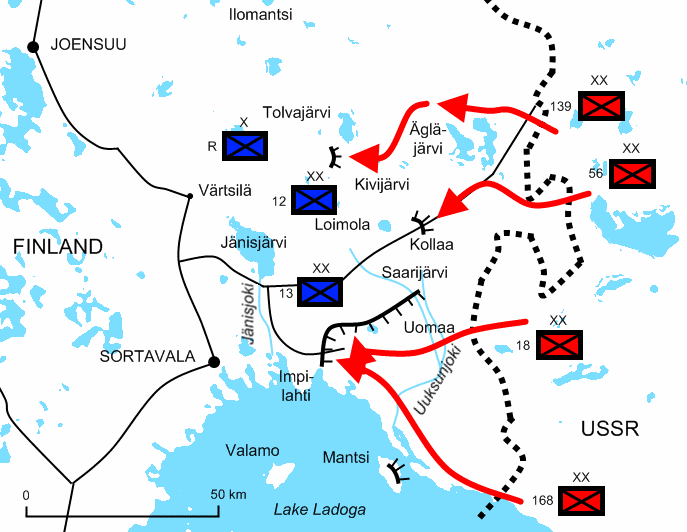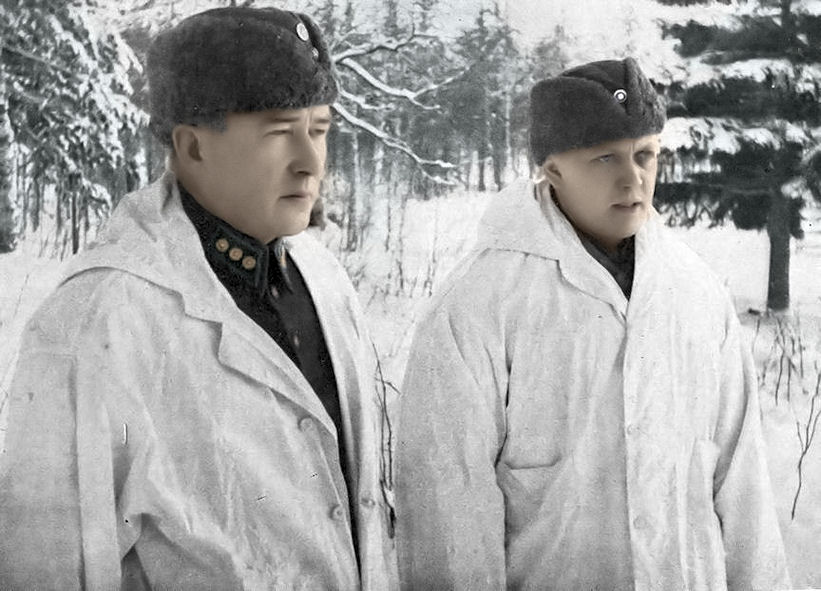The Winter War, a military conflict between the Soviet Union and Finland. It began with a Soviet invasion of Finland on November 30th 1939, three months after the outbreak of World War II, and ended three and a half months later with the Moscow Peace Treaty on March 13th 1940.

This thread will be a chronology of the Winter War which began on November 30th and ended on March 31st 1940.
Day 1 of Winter War, November 30th 1939
The Soviet Union invades Finland with 21 divisions, violating three non-aggression pacts.
At 6.50 AM, artillery barrage starts on the Karelian Isthmus. At 8 AM, Soviet 7th Army advances across the entire Isthmus into mine fields pre-ranged by Finnish machine guns and artillery. 9 Soviet infantry divisions plus tanks (250,000 men) are held by Finnish covering forces (21,000 men) in front of the main defensive line (Mannerheim Line). Soviet planes bomb Helsinki.
Initially, Soviet attacks along the 800-mile border from Ladoga to the Arctic Sea meet little resistance. Eighth Army advances north of Lake Ladoga. Ninth Army strikes into central Finland for the Gulf of Bothnia to cut Finland in half. Fourteenth Army aims to capture the Arctic port of Petsamo.
Photo: Soviet SB-2 bombers over Helsinki,November 30th 1939.

YouTube clip (Elmer Davis And The News - Russians Attack Finland)

This thread will be a chronology of the Winter War which began on November 30th and ended on March 31st 1940.
Day 1 of Winter War, November 30th 1939
The Soviet Union invades Finland with 21 divisions, violating three non-aggression pacts.
At 6.50 AM, artillery barrage starts on the Karelian Isthmus. At 8 AM, Soviet 7th Army advances across the entire Isthmus into mine fields pre-ranged by Finnish machine guns and artillery. 9 Soviet infantry divisions plus tanks (250,000 men) are held by Finnish covering forces (21,000 men) in front of the main defensive line (Mannerheim Line). Soviet planes bomb Helsinki.
Initially, Soviet attacks along the 800-mile border from Ladoga to the Arctic Sea meet little resistance. Eighth Army advances north of Lake Ladoga. Ninth Army strikes into central Finland for the Gulf of Bothnia to cut Finland in half. Fourteenth Army aims to capture the Arctic port of Petsamo.
Photo: Soviet SB-2 bombers over Helsinki,November 30th 1939.

YouTube clip (Elmer Davis And The News - Russians Attack Finland)
Last edited:







